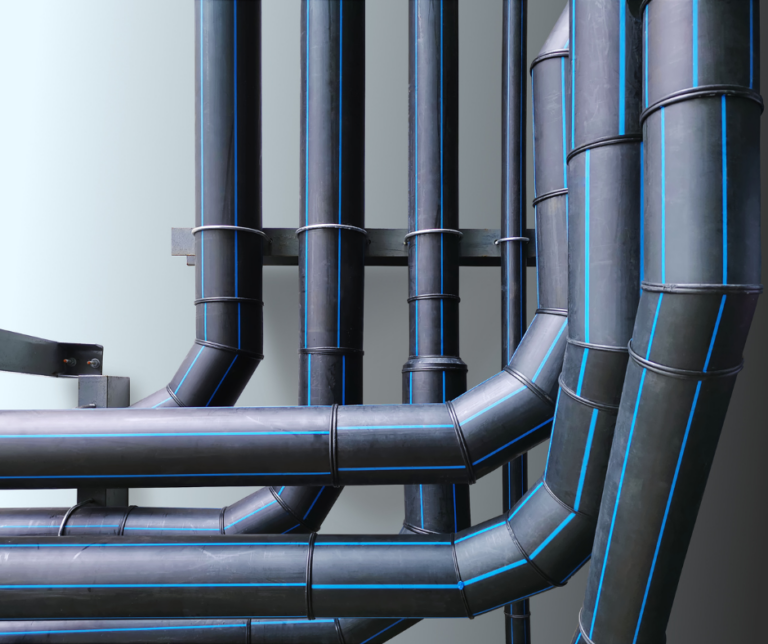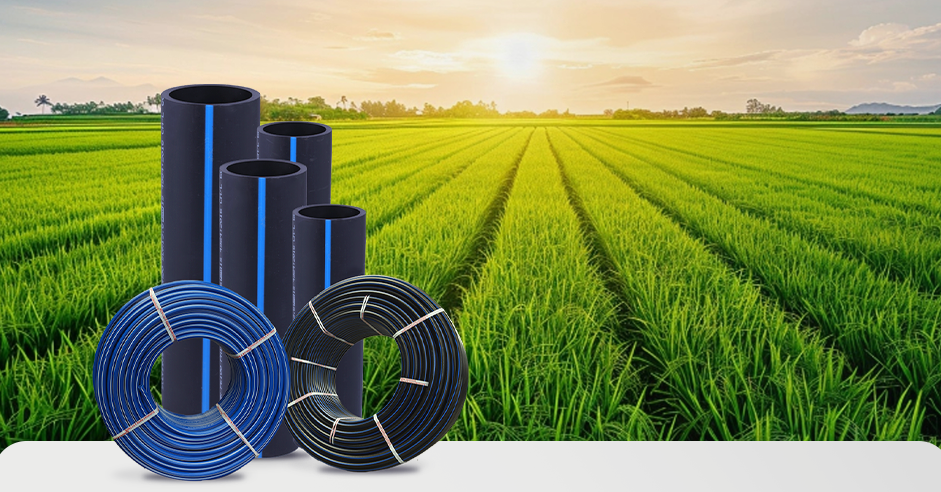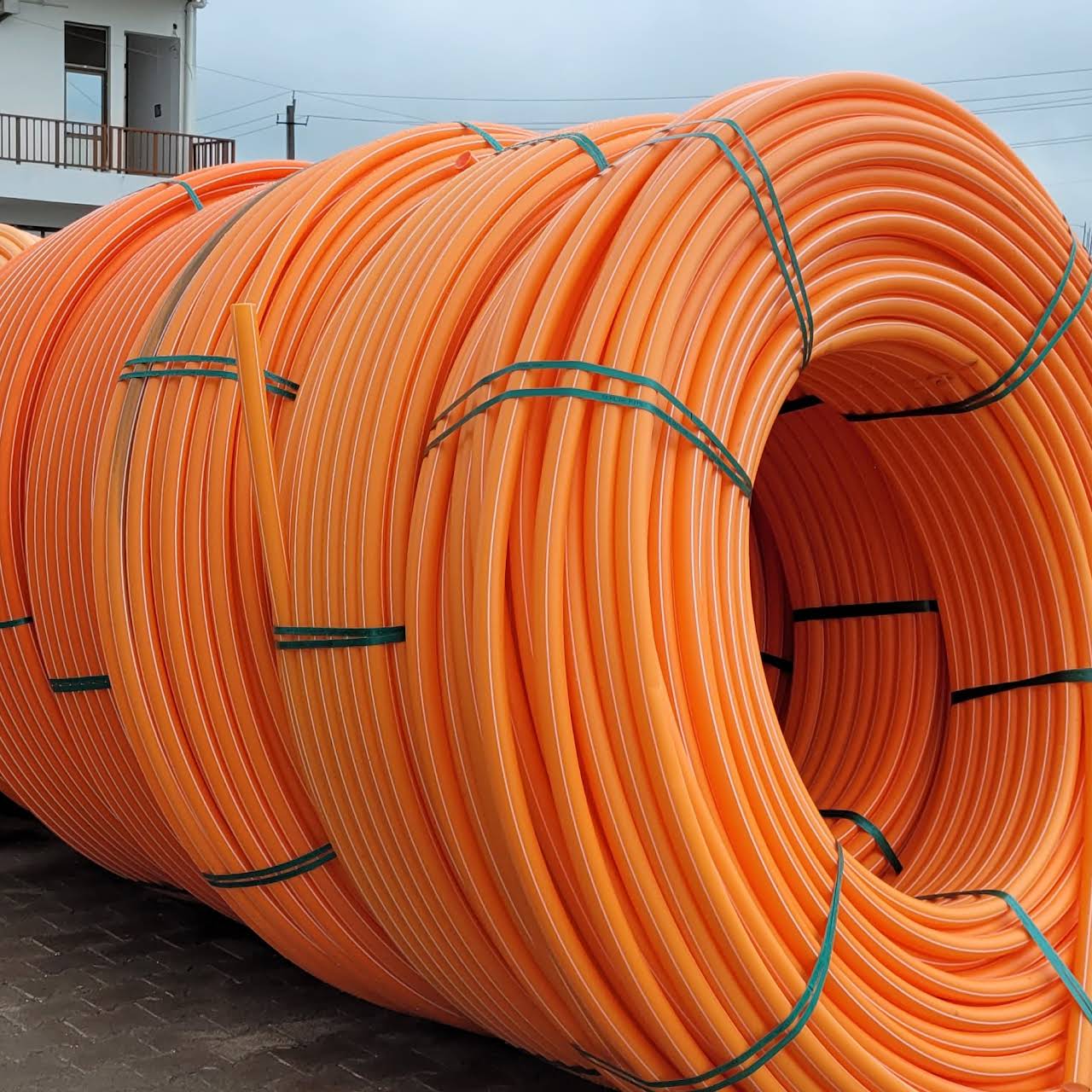In-Depth Look to hdpe pipe fittings Midland TX and Their Applications
Check Out the Manufacturing Refine Behind High-Quality HDPE Pipe and Its Applications
The manufacturing procedure of top quality HDPE pipelines is complex and methodical. It starts with the selection of raw products that enhance performance. Following this, ethylene undertakes polymerization to develop resin, which is then formed through extrusion. Quality assurance is critical, making sure that the end product satisfies stringent standards. The trip of HDPE pipelines doesn't finish with production. Their applications throughout numerous industries expose a more comprehensive significance worth analyzing.
Recognizing HDPE: Residences and Advantages

High-density polyethylene (HDPE) is a functional polycarbonate understood for its resilience and resistance to various environmental elements. This material displays excellent tensile strength, making it suitable for demanding applications. Its low-density structure adds to a light-weight product, assisting in convenience of dealing with and setup. HDPE additionally showcases remarkable resistance to chemicals, which decreases deterioration when exposed to harsh substances.
The material's reduced moisture absorption additionally enhances its durability, making it ideal for usage in pipelines and storage containers. Additionally, HDPE is immune to ultraviolet (UV) radiation, guaranteeing that items preserve their integrity even when exposed to sunlight. Its flexibility permits for the production of complex forms without compromising stamina. The environmentally friendly nature of HDPE, often originated from recycled products, contributes to its charm, advertising sustainable techniques in production. Generally, these properties and benefits make HDPE a recommended selection for different commercial and consumer applications.
Resources Choice for HDPE Production
The choice of raw materials for HDPE production is important to verify the end product satisfies the wanted specs and high quality criteria. High-density polyethylene (HDPE) is largely generated from polymerized ethylene, derived from fossil fuels such as gas or petroleum. The top quality of these feedstocks greatly affects the mechanical and thermal properties of the final HDPE.
Additives also play a significant duty in improving HDPE's efficiency, consisting of anti-oxidants, UV stabilizers, and colorants, which enhance resilience and resistance to environmental elements. The option procedure should take into consideration not just the chemical composition of the raw products however likewise their handling features to assure effective manufacturing.
The sourcing of raw materials should focus on sustainability and compliance with environmental regulations, as liable methods are important in today's market. Inevitably, careful resources choice lays the foundation for generating top notch HDPE pipes ideal for varied applications.
The Extrusion Refine: Forming HDPE Pipe
The extrusion process plays a crucial duty fit HDPE pipes, beginning with careful product preparation techniques that assure ideal circulation and uniformity. Similarly important is the style of the die, which straight affects the last dimensions and surface top quality of the pipe. Together, these factors add greatly to the performance and high quality of HDPE pipeline production.
Material Prep Work Methods
Efficient manufacturing of HDPE pipes starts with meticulous material prep work methods, particularly the extrusion process. Throughout this phase, high-density polyethylene material is very first dried out to remove moisture, making certain excellent flow characteristics. The resin is after that fed right into the extruder, where it undergoes heating and melting, changing right into a viscous state. This heating process is meticulously managed to keep the product's integrity and performance. The liquified HDPE is compelled with a die, shaping it right into a constant pipe form. Appropriate temperature level administration throughout extrusion is essential, as it straight affects the product's homes and the last product quality. As soon as formed, the HDPE pipeline is cooled and cut to specified sizes, ready for succeeding handling and applications.
Die Design Value
Accuracy in die layout plays an essential function in the extrusion procedure of HDPE pipes. The die works as the last shaping device, straight influencing the pipeline's measurements, wall surface thickness, and surface coating. A well-designed die guarantees uniform product circulation, lowering issues such as irregularities and weak points. The geometry of the die need to be enhanced to accommodate the certain buildings of HDPE, including its thickness and thermal habits during extrusion. In addition, the cooling price of the product as it passes with the die can markedly influence the pipe's architectural stability. Investing in sophisticated die technology is crucial for suppliers intending to generate top quality HDPE pipelines that fulfill industry criteria and client expectations.
Quality Assurance Actions in HDPE Manufacturing
Different elements influence the top quality of HDPE pipeline manufacturing, effective quality control steps are important to ensure uniformity and reliability in the final item (custom hdpe pipe manufacturing Midland TX). Key top quality control practices include rigorous product inspection, confirming that the raw polyethylene satisfies established standards for purity and thickness. During the extrusion process, specifications such as temperature level, stress, and cooling time are closely kept an eye on to maintain dimensional precision and structural honesty
Furthermore, post-production screening is crucial; suppliers usually conduct hydrostatic examinations to evaluate the pipe's stamina and resistance to pressure. Visual examinations for surface problems even more enhance quality control. Accreditation from appropriate requirements organizations, like ASTM or ISO, gives an extra layer of integrity. By applying these detailed quality assurance procedures, producers can lessen defects, boost efficiency, and guarantee that the HDPE pipes meet the specific requirements of various applications, eventually causing consumer fulfillment and rely on the item.
Applications of HDPE Pipe Throughout Industries
HDPE pipelines are made use of throughout different sectors as a result of their longevity and convenience. In water distribution systems, they assure effective delivery, while in wastewater management, they give trustworthy solutions for waste transportation. Additionally, farming watering networks gain from HDPE's resistance to deterioration and versatility, making it an excellent choice for modern farming methods.

Water Distribution Equipments
A substantial number of industries rely upon high-density polyethylene (HDPE) pipes for efficient water distribution systems. Understood for their toughness and resistance to corrosion, HDPE pipes are extensively made use of in local supply of water networks, farming irrigation, and commercial applications. Their lightweight nature promotes easy handling and installation, reducing labor prices and time. In addition, HDPE pipelines can accommodate various stress degrees, making them suitable for both low and high-pressure systems. Pipe Supplier American Plastics Midland. The flexibility of the product permits smooth assimilation right into existing framework, reducing the requirement for considerable excavation. Moreover, HDPE's resistance to chemical seeping warranties that the water supplied continues to be risk-free and tidy, making it an optimal choice for maintaining the top quality of potable water throughout various industries
Wastewater Monitoring Solutions
Effective water circulation systems likewise lead the means for innovative wastewater monitoring remedies, where high-density polyethylene (HDPE) pipelines play a considerable role. Renowned for their sturdiness and resistance to rust, HDPE pipelines are optimal for transferring wastewater in different setups. Their flexibility permits very easy setup in intricate atmospheres, reducing the demand for substantial excavation. Additionally, HDPE's click here smooth indoor surface area minimizes rubbing, improving circulation prices and efficiency. These pipes are likewise resistant to chemical leaching, making sure that impurities do not jeopardize the surrounding atmosphere. Industries, municipalities, and therapy facilities significantly count on HDPE pipelines for their reliability and long life, making them a favored selection for contemporary wastewater monitoring systems. This adaptability emphasizes the critical relevance of HDPE pipelines throughout countless applications.
Agricultural Irrigation Networks
Agricultural irrigation networks benefit significantly from using high-density polyethylene (HDPE) pipelines, which offer efficient and trusted water delivery to plants. HDPE pipelines are lightweight, making them easy to transport and install, while their versatility permits various configurations in diverse surfaces. These pipelines demonstrate outstanding resistance to rust, chemicals, and UV radiation, making sure durability in severe agricultural atmospheres. Furthermore, their smooth interior surface area decreases friction loss, optimizing water circulation and reducing energy costs connected with pumping. The long life of HDPE pipes, often going beyond 50 years, adds to lower upkeep and replacement expenditures. Farmers progressively depend on HDPE pipelines to enhance irrigation performance and promote sustainable agricultural methods, eventually leading to improved crop returns and source conservation.

Future Trends in HDPE Pipeline Innovation
As the demand for sustainable and effective framework grows, improvements in HDPE pipe innovation are positioned to change numerous sectors. Arising fads include the assimilation of smart modern technologies, such as sensors and IoT capabilities, which promote real-time tracking of pipe problems, lowering maintenance expenses and protecting against leakages. Furthermore, the development of innovative production methods, such as 3D printing, is making it possible for the production of facility, customized pipe styles that deal with particular job demands.
Furthermore, the emphasis on recycling and circular economy techniques is driving the advancement of HDPE pipelines made from recycled materials, enhancing sustainability. Enhanced jointing methods, such as electro-fusion and mechanical fittings, are additionally boosting installation efficiency and reliability. Ultimately, the expanding focus on ecological policies is pushing makers to take on greener production processes, making sure that HDPE pipelines not just meet sector requirements yet likewise cultivate a more lasting future for facilities development.
Often Asked Inquiries
Just How Does HDPE Contrast to Other Plastic Products?
HDPE exceeds several various other plastic materials relating to toughness, chemical resistance, and flexibility. Its reduced thickness and high tensile stamina make it optimal for various applications, usually going beyond choices in both performance and durability.
What Are the Ecological Influences of HDPE Manufacturing?
The environmental effects of HDPE manufacturing include greenhouse gas exhausts, power usage, and potential air pollution from manufacturing procedures. Additionally, incorrect disposal can lead to soil and water contamination, elevating issues concerning long-term eco-friendly results.
Can HDPE Pipes Be Recycled?
Yes, HDPE pipelines can be reused. Numerous centers approve made use of HDPE for handling, transforming it into new items. This recycling adds to sustainability initiatives, minimizing plastic waste while conserving sources and energy in the production cycle.
What Is the Lifespan of HDPE Piping?

Just How Do Temperature Variants Impact HDPE Pipeline Performance?
Temperature level variants significantly influence HDPE pipe performance, affecting adaptability and stamina. High temperatures can cause softening, while low temperatures might cause brittleness, inevitably affecting the pipe's sturdiness and viability for various applications in diverse settings.